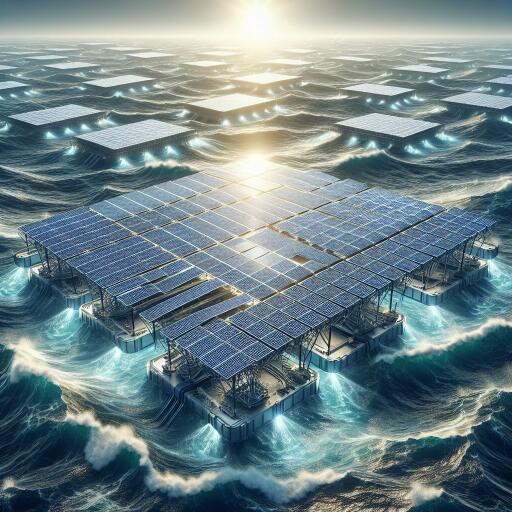
Floating Solar Platforms: Navigating the New Frontier of Offshore Renewable Energy
The concept of floating solar arrays, traditionally positioned on tranquil inland waters, is evolving. A seismic shift is on the horizon as these platforms venture into the tempestuous realm of the open sea. This leap into offshore solar energy represents a significant engineering challenge but carries the promise of integrating solar arrays with offshore wind farms to create a powerful synergy in renewable energy production.
Moss Maritime, a subsidiary of the global entity Saipem, known for its offshore oil drilling expertise, is at the forefront of this innovation. Their move is a striking example of how expertise in fossil fuel industries can pivot to advance renewable energy technologies. The project is a collaborative effort with Equinor to develop a floating solar platform that promises ease of assembly, transport, and deployment, all while ensuring durability in the harsh offshore environment.
The journey toward realizing this ambitious project began between 2018 and 2019, with plans for a 1-megawatt pilot by 2020. However, due to unforeseen obstacles, the plan was revised to aim for a 0.5-megawatt installation slated for 2023. This adjustment allowed for more concentrated development efforts and testing, spearheaded by SINTEF Ocean, a leading Norwegian maritime research institution.
Described as “revolutionary,” the testing phase involved a platform design unprecedented in scale and complexity, comprised of 64 modules. Such innovations underscore the challenges of adapting infrastructure to the dynamic forces of wind, waves, and currents while ensuring competitive energy costs. Nonetheless, the initiative demonstrated the potential for deploying floating solar arrays far into the sea, potentially alongside offshore wind farms, marking a significant milestone.
Recently, the XolarSurf concept by Moss Maritime received a nod of approval from DNV, a global leader in risk management, signaling a step forward in the pursuit of offshore floating solar solutions. This endorsement, based on stringent standards for offshore wind structures, is a promising development for the XolarSurf prototype, expected to be launched soon.
The prospects for integrating floating solar technology with offshore wind farms are particularly promising. By sharing infrastructure and export cables, this combination could significantly enhance the capacity for clean energy production without monopolizing additional space. Moss Maritime is optimistic about the competitive edge of floating solar over floating wind in terms of simplicity, cost, and scalability.
Even as the focus intensifies on offshore developments, the inland floating solar market continues to expand, capitalizing on unused water bodies to host solar arrays without encroaching on land resources. From reducing energy costs at water treatment facilities to driving market growth with government incentives, floating solar panels are becoming an increasingly viable option for sustainable electricity generation.
Moss’s advancements and the market’s trajectory underscore the evolving landscape of renewable energy, where innovations in technology and policy converge to unlock new frontiers. According to industry forecasts, the global floating solar market is poised for significant growth, fueled by technological advancements and an unwavering commitment to sustainable energy solutions.
The journey of floating solar platforms from tranquil lakes to the churn of the open sea embodies the relentless pursuit of renewable energy innovation. As these platforms navigate the new frontier, they herald a future of integrated, efficient, and expansive clean energy production, capable of meeting the demands of a world in dire need of sustainable solutions.





Leave a Reply